

Report difficulties to
twny@billjungelsworks.net
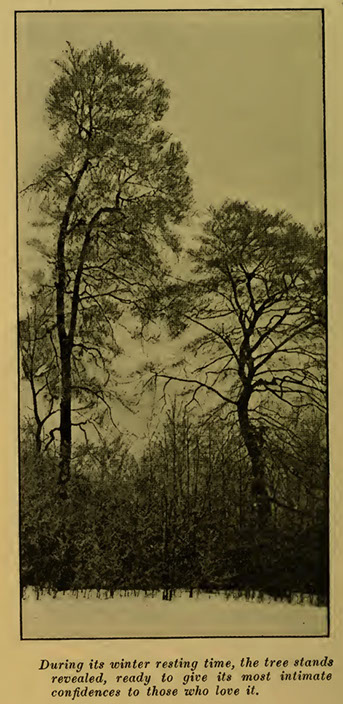
Link to archive of her book

Anna Botsford Comstock was a pioneering woman naturalist, the first female professor at Cornell. In 1916 her appreciation of the way that trees revealed themselves in winter led her to publish "Trees at Leisure" a book illustrated with photographs of each species about which she wrote. The photograph on the left was taken by Verne Morton for the fronts-piece of the book.
Anna was a thoroughly trained naturalist and highly skilled illustrator whose 1911 Handbook of Nature Study is still used. In "Trees at Leisure" she chose to use photographs and write appreciations,not analysis. I will continue in that vein for the most part.
Even from earliest times photographers were drawn to photograph winter trees. William Henry Fox Talbot, the developer of the system of photographing in negative to print positive on paper, began very early. His photo on the right was taken around 1842.
Dancing in the Dark (Delaware Park)
Egyptian friends once defined for my wife the single rule of driving in Cairo; find an empty space and fill it. Trees could be Cairo motorists.
My imaginary drone looking down at the seeming gridlock of those cars below sees a massive dense square dance or some kind of pacifist's mosh pit is going on. The whole seems immobile, but you see individuals darting into spaces thus leaving spaces for others to fill.
Trees in a forest or densely planted park do the same, but you'd have to come back to the spot annually to see the dance in photos you could make into a flip book. The denuded trees of winter reveal this dance most clearly though lacking the colorful costumes of Spring and Fall.
The dance isn't over for this reaching stump. The decay and the fungi, moss, insects and small mammals that grow on or in it will perform a dance of decay and replenishing of the earth.
I think the park managers saw that the reaching gesture of this broken tree communicates this because nowhere else have I seen them leave standing the remains of a fallen or broken tree.
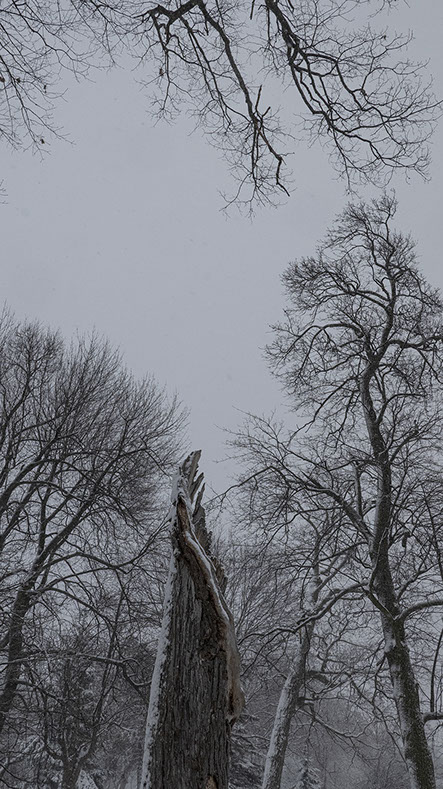
Stilled torso of a snapped oak (Delaware Park)
%20over%20spring2finaladjustednewflat.jpg?crc=4264759718)
Hawthorn: Winter over Spring (Delaware Park)
Someone defined the poetry of youth as flesh and that of old age as bones. See the poetry of Yeats for a verification.
Here in temperate climes layering the winter tree over its summer state can give us a dramatic sense of how much more than us the flowering trees alter their state of being. While we wreck the planet burning fossil fuels and bundle up in multiple layers of clothing the trees undress from the leaves they cannot afford to sustain in the coming cold and alter their cellular content in the living phloem to keep it from freezing. The bark and the inner wood can freeze. We need to protect our whole living organism. (and learn to protect theirs by leaving them alone and getting rid of the things we poison them with.) As we do it let's keep our eyes on their flesh and bones.
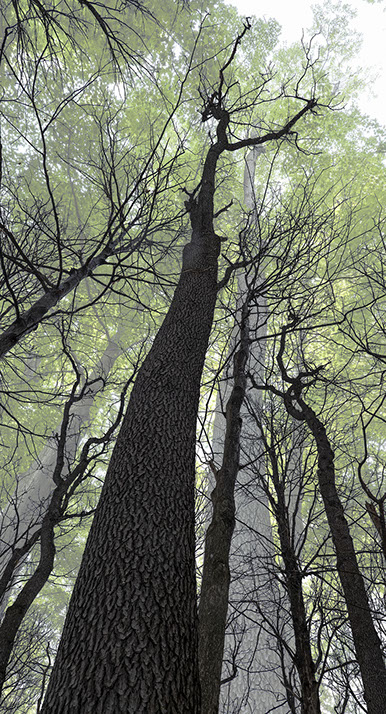
Black Cherry: Winter over summer
(Reinstein Woods)
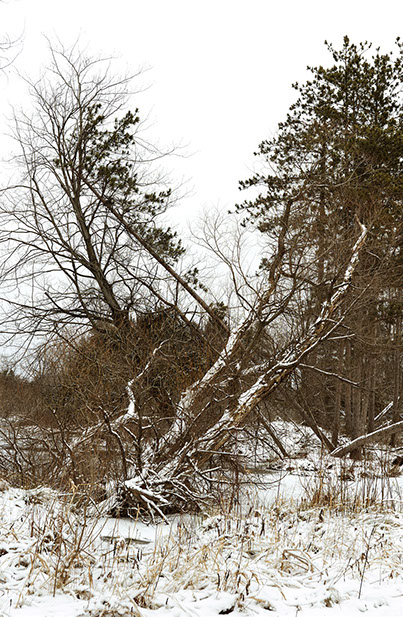
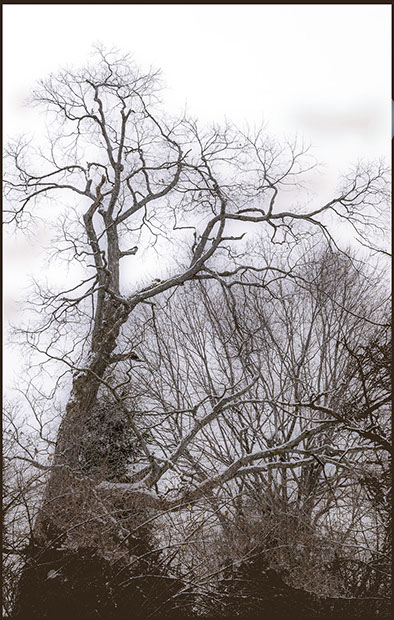
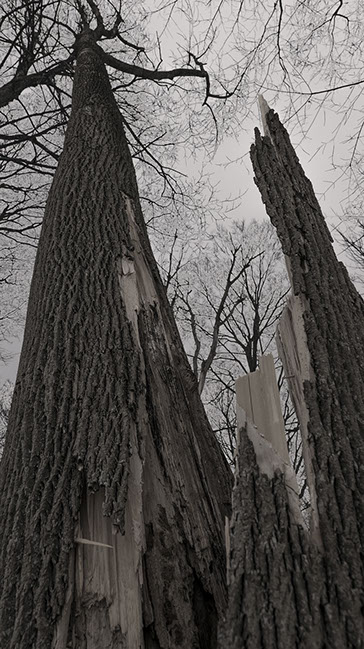
Partially uprooted willow, red pine and sugar maple (Reinstein Woods)
Sky groper (Delaware Park)
Split Ash (Reinstein Woods)
A year and a half later all these trees are still bearing leaves or needles. Enough of their roots are still in the ground. **
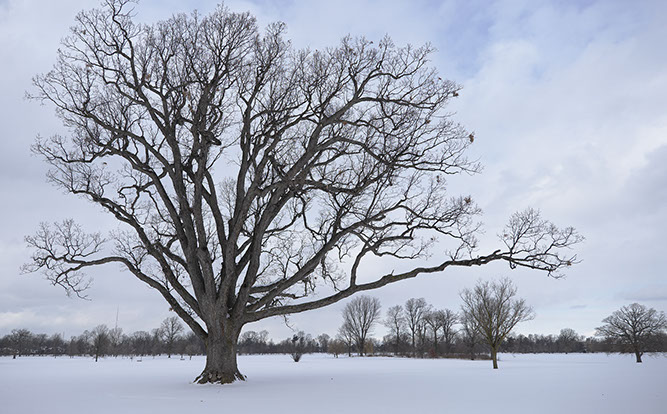
"Older Brother" in honor of and accord with what the Seneca who lived here might have called it as it grew here before the European colonizers took over the land.
A recognition that they live much longer than us and have much to teach us.
How ironical then that it lives now in the middle of a golf course to which most park goers have no access.
As of now the oldest known tree in Buffalo, though only a bit older than than the grand Sycamore on Franklin Street.
Older Brother Oak (Delaware Park Golf Course)
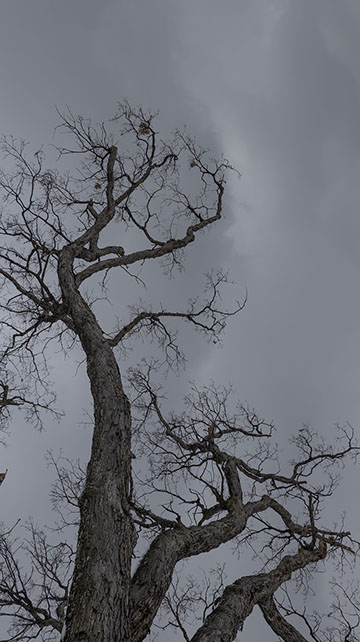
I'll talk about that stately Sycamore in a future entry. It doesn't really matter what tree is the oldest. What matters is that they live so much longer than us and deserve our respect. Now that we are finding out so much about how trees live in communities and communicate with each other through root/fungal systems and through the air and how they cooperate perhaps more than they compete, we need the humility to learn from them.
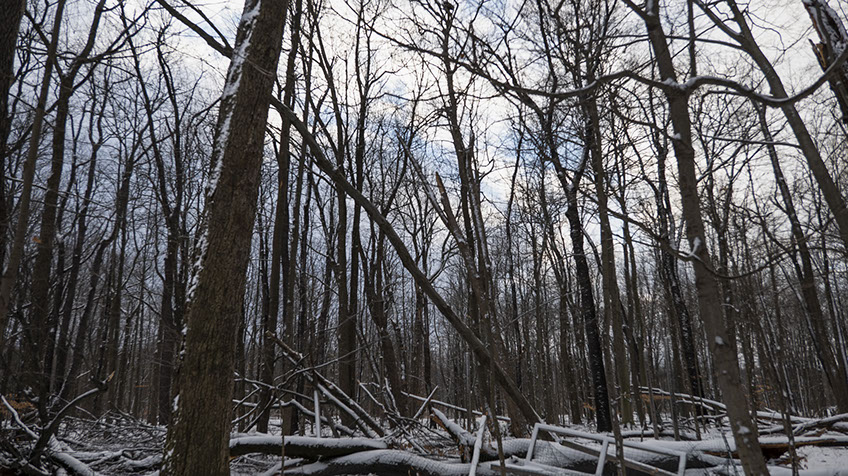
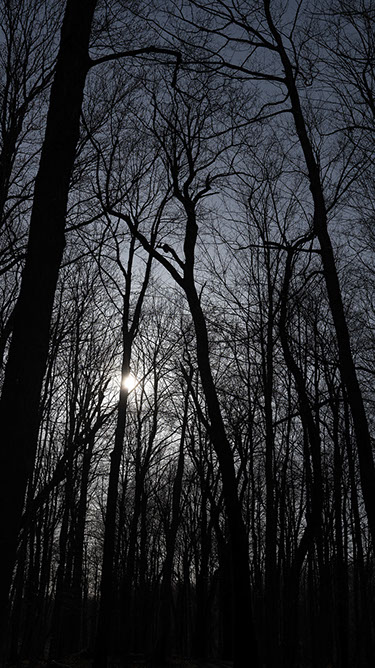
** I've puzzled a lot about what caused the willow, pine and maple in the photo near the middle of this page to fall in that crossed diagonal. (above, under Hawthorn) It wasn't a normal blow over because then they would all fall in the same direction. Then I considered a micro-burst, which is a kind of mini tornado. But although they cover a small area I haven't heard of any that cover an area that small. This spring I saw that the water at that end of the pond overflows there in the snow melt and rains, so erosion had at least something to do with it. I like to speculate about these things before I consult the people who will probably know the answers. Often something completely different than what I thought of. If you like to speculate this way I recommend reading Tom Wessels' book "Reading the Forested Landscape". Though he's writing about New England, most of it applies equally to our area. Some of this material is covered in his YouTube videos. Those diagonals of partially uprooted or snagged trees add a dynamism to the visual beauty of our forested landscape..